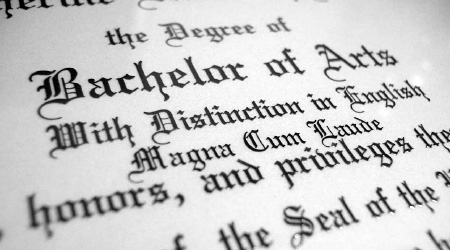What Is Good Debt And Bad Debt

Debt often gets a bad rap in the media and with consumers and in some respects it is accurate. This is because both parties are often referring to credit card debt which is exploded in recent years leading to an increase in bankruptcies and other problems such as divorce. In reality, there are two types of debt some of which are good and others which are bad. The key to advancing financially in society and life is to take advantage of the good debt and eliminate the bad debt whenever possible. First however, consumers need to know which is which when making financial decisions.
Good Debt
Fortunately for consumers there are a number of financial obligations which can be characterized as good debt. Any debt which has a net tangible benefit for the borrower either in the acquisition of property or improvement in self can be considered good debt. Purchasing a home using a mortgage is considered a good debt because of the many benefits which result from home ownership. First, there a significant tax benefit by taking mortgage interest off of personal income taxes. The borrower also benefits from living in the home for the duration as well as building equity if the housing market goes well. Owning a home also provides individuals an opportunity to start home-based businesses which means less money is needed for leases or rent.
Student loans resulting from higher education is also considered another form of good debt. Much like home ownership, it is often unrealistic for most consumers to pay for $150,000 home or $100,000 college education. It has been proven in many different studies that investment in education leads to more earning potential over the course of a worker's lifetime. So while the upfront expense of having student loans may seem overwhelming, the borrower often makes significantly more during their working years. Often, when businesses evaluate a credit report they consider a mortgage and student loans to be good credit and the only impact it has is on overall debt load and consistent monthly payments.
Bad Debt
Credit card balances are considered the primary source of bad debt for most consumers and can negatively impact future lines of credit and loan opportunities. Credit cards by nature are unsecured loans with variable balances and are easily prone to abuse and excess by consumers. While a useful tool leading to timely purchases and flexibility, many consumers get in over their head and have to seek bankruptcy protection when debt is out of control. More often than not, any black marks on a credit report almost always relate to credit cards. Missed payments, late payments, over the limit fees, charge-offs and legal actions are inevitably tied to credit cards which results in them being perceived as a bad debt. Credit cards almost exclusively facilitate the consumption of products and services as opposed to an investment in real estate or education. This characterization alone creates the perception of self-indulgent behavior and excess.
Summary
The delineation between good debt and bad debt is often crystal clear for most consumers. This is why credit reports and the information they provide says a lot about an individuals credit worthiness and financial responsibility. Sometimes consumers feel that too much emphasis is placed on their credit report when actually they're good people but just misunderstood. Responsible consumers with good debt have mortgages which are always paid on time and low student loans because they worked through college and no credit card debt. Irresponsible consumers don't have a home, don't have an education and have tens of thousands of dollars in credit card debt. The question of what is good debt and bad debt should really be what is a good consumer and bad consumer? When evaluating a credit report the answer becomes perfectly clear.







